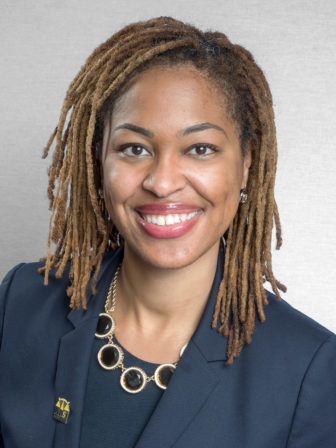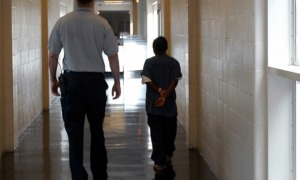 Have you heard of the Bordentown School? Founded by the Rev. Walter Rice, Bordentown — officially named the New Jersey Manual Training and Industrial School for Colored Youth — was a co-ed public boarding school for black students, run by the state of New Jersey between 1886 and 1955. Dubbed the “Tuskegee of the North,” after Booker T. Washington’s Tuskegee Institute, the exclusive school focused on preparing young black men and women to be future leaders, emphasizing vocational training in addition to academics.
Have you heard of the Bordentown School? Founded by the Rev. Walter Rice, Bordentown — officially named the New Jersey Manual Training and Industrial School for Colored Youth — was a co-ed public boarding school for black students, run by the state of New Jersey between 1886 and 1955. Dubbed the “Tuskegee of the North,” after Booker T. Washington’s Tuskegee Institute, the exclusive school focused on preparing young black men and women to be future leaders, emphasizing vocational training in addition to academics.
That was until the Supreme Court’s seminal 1954 decision in Brown v. Board of Education, which struck down segregation in public schools. Bordentown closed one year later.
And today, on a campus that once served as a pinnacle of black excellence and achievement, attracting visits from such luminaries as Albert Einstein and Paul Robeson, sits New Jersey’s only youth prison for girls — the Female Secure Care and Intake Facility.
Bordentown is, quite literally, the school-to-prison pipeline realized.
As we reflect on the importance of Women’s History Month, the transformation of Bordentown from a historic place of learning to a female youth prison should inspire us to fight for our state’s young girls now locked up behind these prison walls.
The stories of our young incarcerated women are too often ignored. But this disregard stands in stark contrast to the realities of how our prison system uniquely impacts girls. Over the past 20 years, the proportion of girls involved in the juvenile justice system has increased at every stage of the process, even as overall youth arrests have declined.
[Related: Next Administration Needs to Close Youth Prisons, Experts Say]
This increase is due, in part, to racially discriminatory policy decisions that determine which kids get sentenced to incarceration and which kids don’t. These policy decisions have had a particularly devastating impact on girls of color; black girls are currently the fastest-growing group in the juvenile justice population, even though black and white youth commit similar offenses at similar rates. Indeed, black girls were nearly three times as likely as white young women to be referred to court for delinquency in 2013.
These racial disparities are also present in New Jersey’s juvenile justice system — as of Feb. 10, 75 percent of the girls committed to state juvenile facilities are black or Hispanic.
In addition to these unacceptable racial disparities, incarcerating our state’s girls does not make financial sense. New Jersey currently spends $25,008,000 each year to operate the Juvenile Medium Security Center — which includes the girls’ youth prison and the Juvenile Medium Secure Facility, the highest-level youth prison for boys. And locking our girls away make even less sense because the girls’ youth prison is severely underutilized. As of March 2015, the Female Secure Care and Intake Facility housed only eight girls out of a capacity for 48.
Research has also shown that youth incarceration actually increases recidivism rates, and is contrary to the developmental and emotional needs of our young people. Incarcerated girls, in particular, come from particularly vulnerable and traumatized backgrounds: 90 percent of incarcerated girls nationwide report some form of emotional, physical or sexual abuse.
Yet, instead of receiving the treatment and services they so desperately need, close to their families and communities, these girls are being locked behind prison walls far away from home.
So what can be done?
As the New Jersey Institute for Social Justice outlined in its recent report, “Bring Our Children Home: Ain’t I A Child?” New Jersey must shift to a community-based system of care, where emphasis is placed on keeping our children home with their families. To achieve this goal, we must shift funding away from underused, archaic and overpriced youth prisons to community-based intervention, prevention, diversion and incarceration alternative programming.
Not only are these programs more cost-effective, but they have been shown to protect public safety and reduce recidivism. Specifically, these programs must be tailored to address the distinct needs of young women, and must also include such methods as trauma-informed care.
In the narrative of criminal justice reform, we cannot overlook our young girls and how they are uniquely impacted by the system. Instead of pouring our money into incarceration, we should return to making our investments in the types of facilities that Bordentown once was, not what it has become. Just as we must always remember the history of Bordentown, we should continue to speak the names of those young girls, now locked away behind closed doors on that once hallowed ground.
They must not be forgotten.
Andrea McChristian is associate counsel at the New Jersey Institute for Social Justice. She is the primary author of the Institute report on racial disparities in the New Jersey juvenile justice system, “Bring Our Children Home: Ain’t I A Child.”
More related articles:
Incarcerated Youth Not Free Even After Their Release
Several States Look to Keep Teenagers Out of Criminal Court
Advocates Cheer Probe of Racial Bias in Mississippi School Discipline
































